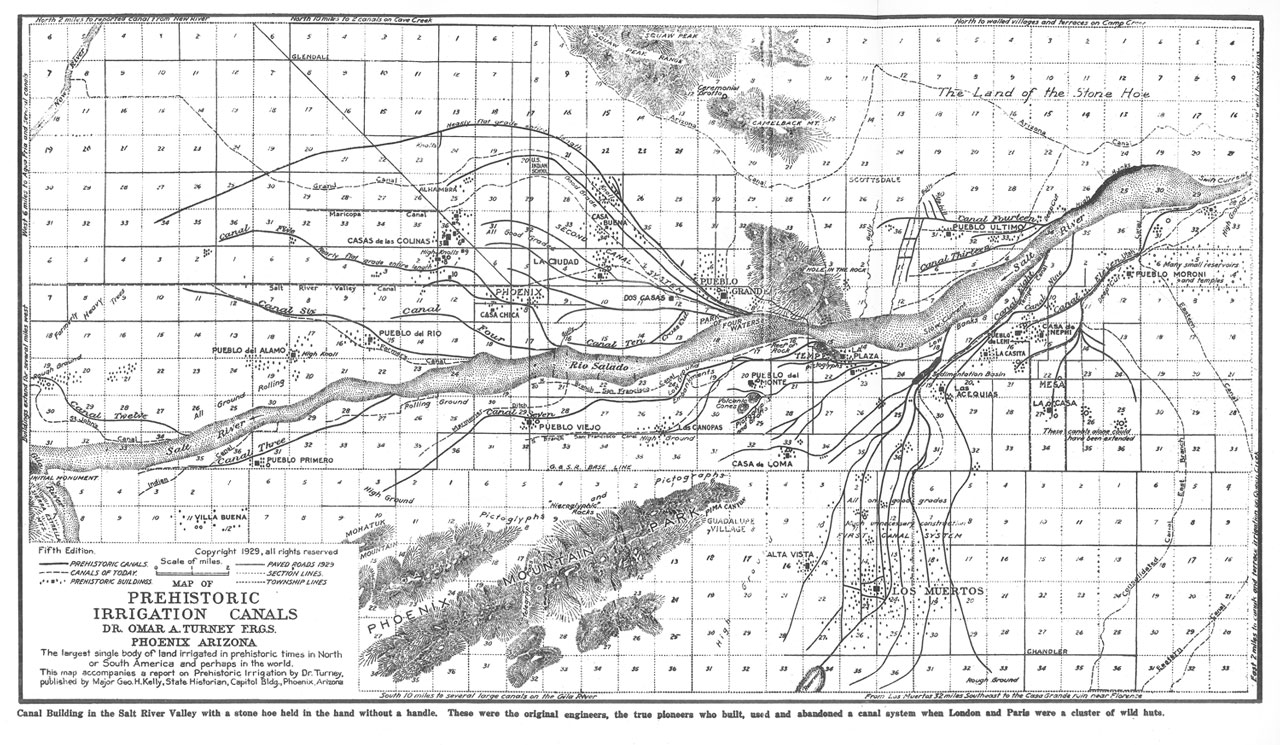

Later in the summer, using holes that they formed in bedrock, the Hohokam pounded mesquite beans into flour.

In early summer, the Hohokam eagerly collected saguaro and prickly pear fruits. They made digging sticks of durable ironwood to retrieve tuberous roots and collected leaves and other plant parts for medicines, food, and dyes. They hunted bighorn sheep, deer, and other animals there. A day's walk into the hills provided the people with many important resources. When they weren't tending to their crops, the Hohokam explored and exploited the environment around them. On and near the slopes they also stacked up rocks and planted agave and yucca in the piles. They used every possible space to grow crops, even building small terraces and check dams on hill slopes to collect and divert rainfall runoff toward their fields. Near their villages, on floodplains or alluvial slopes, the Hohokam established fields of corn, beans, squash, and cotton. The Hohokam lived in villages near the base of the Tucson Mountains, close to sources of water like the Santa Cruz River or Brawley Wash. So what did the Hohokam do in these mountains? Most of the sites show no signs of habitation-no houses, no fire pits. Tools and pottery like these are common in the Tucson Mountains they number in the hundreds, maybe even the thousands. The Hohokam left these artifacts at the site over 600 years ago. Gregonis, Archaeological Consultantįrom sonorensis, Volume 16, Number 1 (Spring 1996)īeneath the creosote and cactus around the Desert Museum, battered stones, sharp-edged pieces of rock, stones for grinding, and fragments of pottery can be found. In addition, we have consulted with experts in the field regarding content, which takes the form of videos or text, appearing alongside the maps to provide context as well as some remarkable stories.By Linda M. We have included the ability to change the way the contemporary map works, allowing viewers to choose which map mode best suits their needs. Our mobile app has been carefully designed to facilitate this map-based exploration. Our goal is to foster a greater awareness of this legacy by inviting current residents of the area to contemplate a deeper map. New construction has now obscured almost all evidence of ancient irrigation, making the deep human history of the Valley quite abstract to the general public. In fact, descendant communities are still irrigating and growing food on some of the same fields today. Nor have the people who created this legacy disappeared. While those sites and the cultures that produced them were amazing, what happened here in the Salt River Valley between AD 400 to about AD 1450 was arguably far more influential. When we think of ancient cultures in the American Southwest, we tend to think of Chaco Canyon or Mesa Verde. Current residents of the Phoenix metro area are often surprised to learn about the scope and sophistication of large scale ancient irrigation of the lower Salt River Valley. A Deeper Map is a public art project that takes the form of a map-based mobile app.


 0 kommentar(er)
0 kommentar(er)
